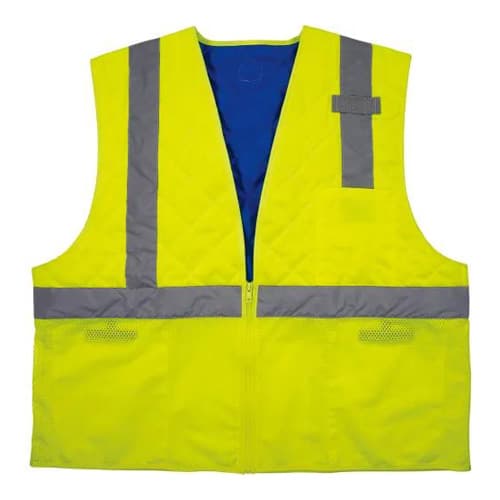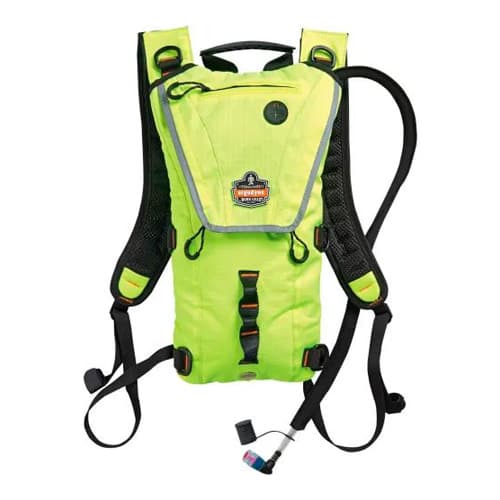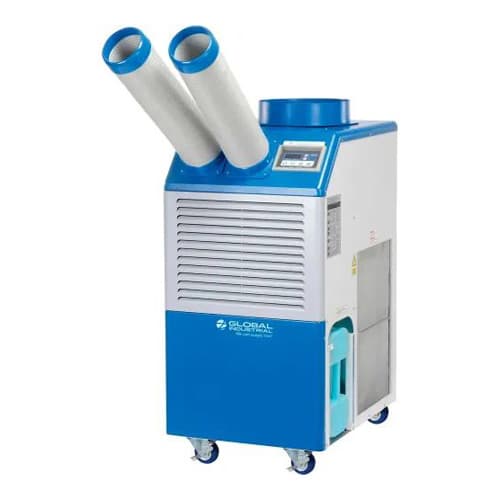Ah, summertime! It fills the mind with images of beaches, pool parties, and fun in the sun. But summer can also be brutal for the professionals working in the grueling heat and dry air. As temperatures rise each year, it is crucial to know the dangers of working in extreme conditions and take actions to protect your workers. Prepare your people for working safely in the heat by thinking ahead.
WHICH PROFESSIONS ARE MOST AT RISK?
Heat-related illness is a significant risk for any outdoor job that puts you directly in the sun. Construction and transportation workers are particularly vulnerable, but there are dangers in agriculture, landscaping, oil and gas well operations, and package delivery as well. Basically - any time you are in the sun with no or little shade, you could be vulnerable to the heat. When you add in hard labor and suffocating protective clothing, the danger multiplies exponentially.
Heat stroke is no small thing. The EPA reports over 1300 deaths per year in the US due to extreme heat. This is why heat stress prevention is so crucial.
WHAT ARE THE SIGNS OF HEAT STRESS?
Protect yourself and your co-workers by keeping an eye out for the key signs of heat stress. Here are a few warning signs and levels of heat distress and what to do about them:

|
SIGN OF HEAT STRESS |
DESCRIPTION |
WHAT TO DO |
| Heat Rash / Prickly Heat |
Skin irritation caused by excessive sweating, including red clusters of pimples or small blisters, usually on the neck, upper chest, groin, under breasts, or in elbow creases. |
Move to a cooler, less humid area. Keep the rash area dry and apply powder to increase comfort. Do not use ointments or creams which may impair cooling |
|---|---|---|
| Heat Cramps |
Painful cramps or even spasms in the abdomen, arms, or legs caused by sweating which depletes the body’s salt and moisture levels in the muscles. |
Get to a cooler area. Eat a snack and drink fluids, particularly drinks with electrolytes. Avoid salt and get medical attention if the cramps don’t subside within an hour or the worker has a preexisting heart condition. |
| Heat Syncope (Fainting) |
Dizziness or lightheadedness that usually occurs after standing or suddenly rising from a sitting or lying position. |
Sit down in a cool place. Slowly drink water or clear juice. |
| Heat Exhaustion |
Headache, nausea, dizziness, weakness, irritability, thirst, heavy sweating, elevated body temperature, and decreased urine output resulting from extreme loss of water and salt from excessive sweating. |
Call for medical help and remove the affected person from hot areas. Drink small amounts of cool water. Use water, cold compresses, ice baths, or fans to cool the body. Remove unnecessary clothing, including shoes and socks. |
| Heat Stroke |
When the body temperature rises rapidly |
This is a life-threatening emergency. Call for care immediately. Try to cool the body down by removing outer clothing and using cold water, cold compresses, or ice baths. Circulate air with a fan and armpits, and groin |
Keep an eye on your workers for these signs. The earlier you catch a problem, the easier it is to treat. As always, consult a medical professional when dealing with any heat-related issues.
HOW CAN WE PLAN FOR EXTREME HEAT?
Prevention is everything. When there is a good plan in place, we drastically cut down our chances of a heat-related emergency. There are some simple steps we can take to keep our staff healthy in the heat.
Water, Water Everywhere
Having adequate supply of water is by far the most important preventative measure. Most employers underestimate the amount of necessary water on a job site. Remember: in the high heat, workers should be drinking two to three times more water than they usually do. Here’s how that breaks down per the US National Academies of Sciences, Engineering and Medicine:
Normal fluid daily intake: 3.7liters (men), 2.7 liters (women)
Extreme heat fluid daily intake: 11 liters (men),8 liters (women)
Give It A Rest
In addition to plentiful water, OSHA recommends two other key elements to preventing heat related illness: shade and rest. This means planning in rest periods for your workers as well as providing cool, shaded areas for breaks. Designated air conditioned spaces where the body can cool down are key to maintaining worker health.
Ease Into It
Another important factor: the human body takes a few days to acclimate to high heat conditions. With most jobs, we get to the site and hit the ground running. Time is money, right? But here’s the problem: 50-70% of heat stroke-related fatalities happen in the first few days of working with extreme temperatures before the body can build up tolerance to the heat. By adjusting your labor expectations in the first few days to factor in climate acclimatization, you are thinking long term and protecting your most valuable assets: your workers.
Shifting Schedules.
It’s easy to know when in the day the heat is most intense. Plan your schedule to avoid those times. Working at night whenever possible is a great solution, particularly in high heat areas.
The Buddy System.
Create a culture of watching out for each other. Managerial oversight on a daily basis is key - have a written plan to manage the conditions. But it should go beyond just the site boss. Educate your crew on the warning signs of heat stress and send a clear message: your health is more important than anything. Whenever possible, encourage workers to check on each other, encourage drinking more water, and taking breaks in shady areas. On busy high-paced jobs, it can be tempting to become single-minded on getting the job done as quickly as possible. But beyond the obvious moral directive of taking care of your employees, heat-related illnesses could cost your company significant time and money. In the long run, the best jobs are the safest jobs.
WHAT CAN WE DO ABOUT HIGH HEAT?
Globally, addressing climate change is the main solution. While your company can’t single-handedly stop climate change, you can do your best to be part of the solution instead of part of the problem. This means “thinking green” and trying to minimize carbon emissions. A few simple steps:
- Using clean, renewable energy like solar, wind, and hydro to power your business
- Create a culture of environmentally friendly practices with your employees
- Replace inefficient, outdated, or broken equipment with green energy or energy efficient options
- Utilize technologies that improve sustainability practices
- Use “green” suppliers and require vendors to provide annual reports
While providing adequate drinking water is the main preventative measure, there are a number of products that can help your crew beat the heat. are a great and affordable way to help keep your employees safe. , and also provide your team much-needed protection from the sun.
In workspaces where bottled water is unwieldy, can be helpful. Worn like a backpack, hydration packs are filled with up to 3 liters of waterÀ that’s roughly 5 bottles. Heat stress kits are crucial to treat early signs of heat stress.
When we think of heat illness prevention, we often overlook how indoor cooling equipment can help. Best practices require regular indoor breaks and that indoor space should be cool. , and are highly recommended to create a cool resting place for your heat-taxed crew.
Both the Centers for Disease Control and Prevention CDC and the Occupational Health and Safety Administration OSHA have identified the high risk of working in hot environments. Luckily, an ounce of prevention will do wonders to avoid unnecessary suffering and loss for your crew and business. Beat the heat by being smart.
The information contained in this article is for informational, educational, and promotional purposes only and is based on information available as of the initial date of publication. It is the reader’s responsibility to ensure compliance with all applicable laws, rules, codes and regulations. If there is any question or doubt in regard to any element contained in this article, please consult a licensed professional. Under no circumstances will Global Industrial® be liable for any loss or damage caused by your reliance on this article.


